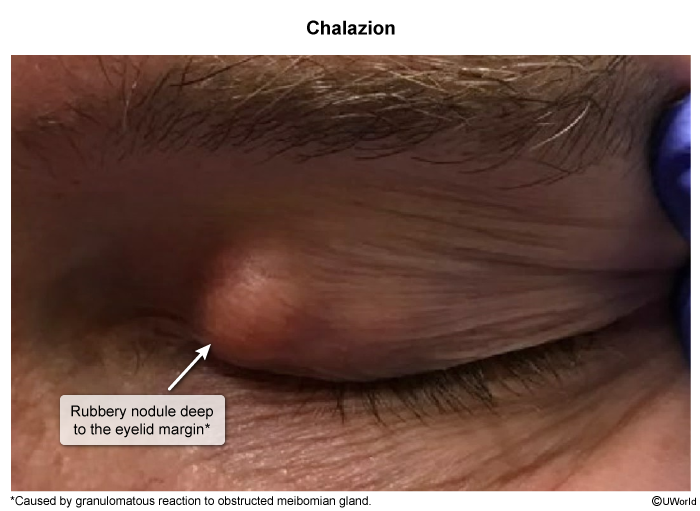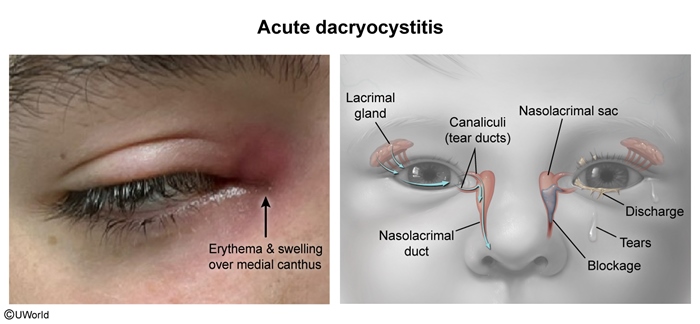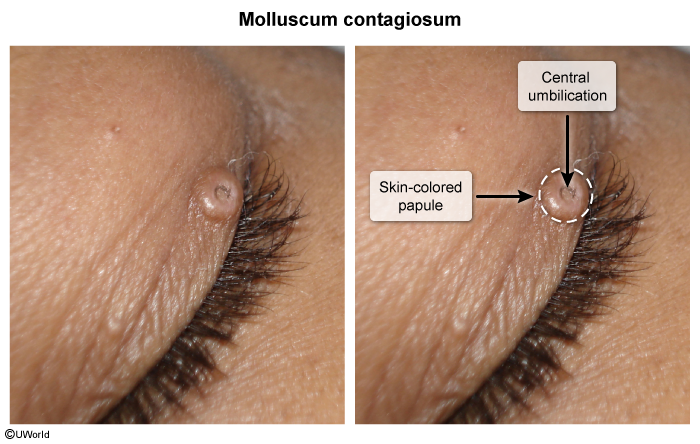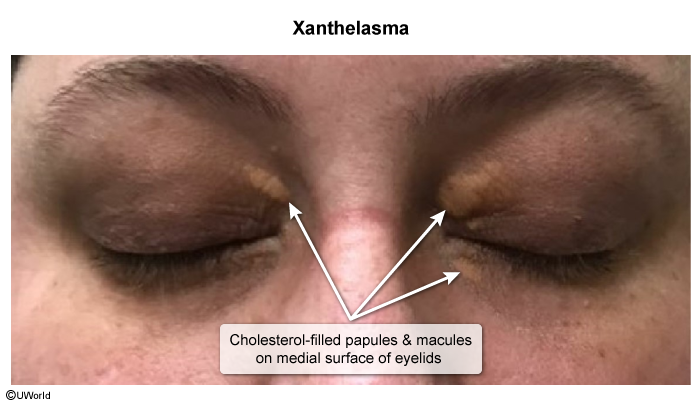Chalazion
Article Sections
Introduction
Chalazion, also known as a meibomian cyst, is a common benign eyelid disorder resulting from a granulomatous reaction to obstructed meibomian glands.
Pathophysiology and risk factors
Chalazion develops when the meibomian glands, which secrete oily substances that contribute to the tear film, become blocked. The obstruction leads to the accumulation of glandular secretions within the gland, causing inflammation and the formation of a painless, firm nodule. Therefore, risk factors are based on etiologies that increase and thicken meibomian gland secretion, including chronic blepharitis (inflammation of the eyelid margin), rosacea, seborrheic dermatitis, and poor eyelid hygiene.
Clinical presentation
Patients typically have a firm, painless nodule on the eyelid. The lesion may initially be small but can gradually increase in size over time. Chalazia are more commonly located on the
Continue Learning with UWorld
Get the full Chalazion article plus rich visuals, real-world cases, and in-depth insights from medical experts, all available through the UWorld Medical Library.
Images



